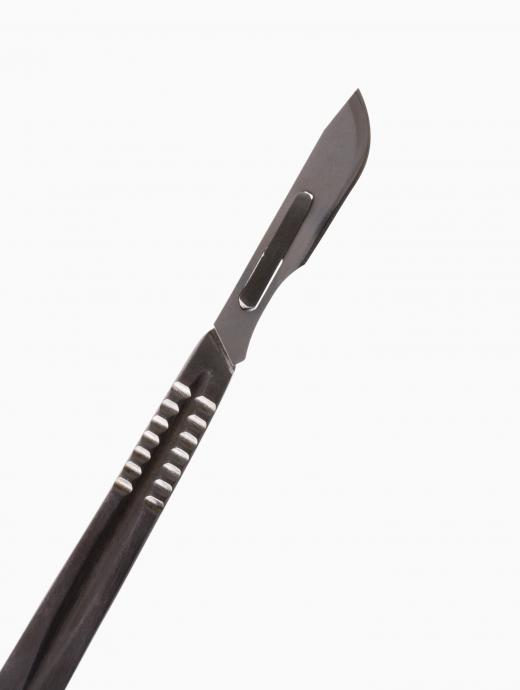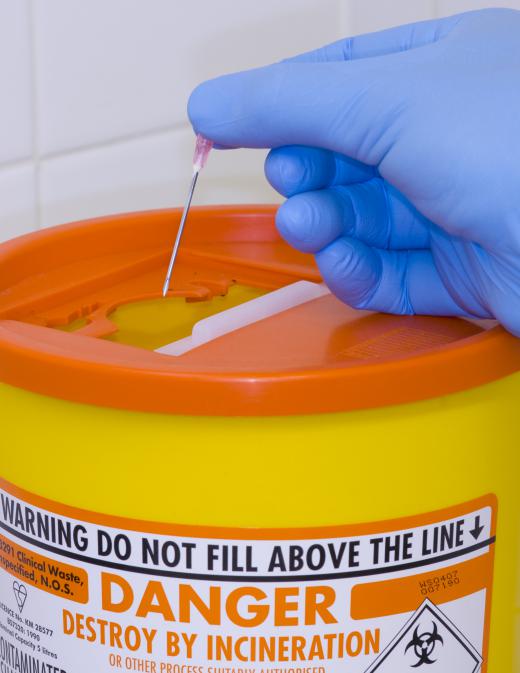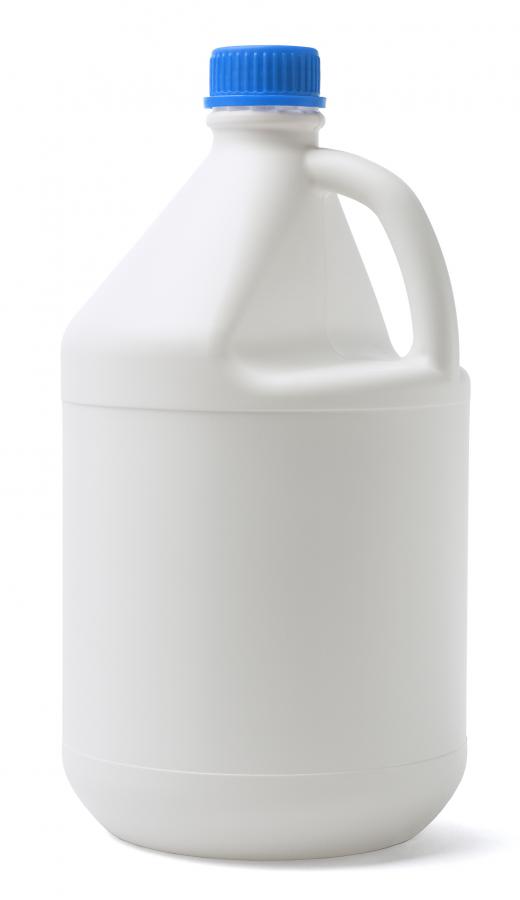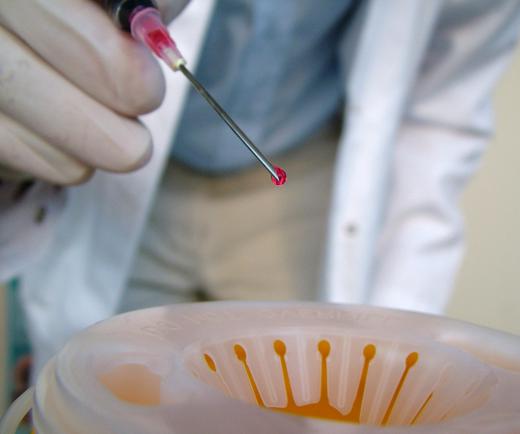Biomedical waste generally includes materials that may cause or carry harmful diseases or pathogens. Examples include medical gloves, laboratory samples, live viruses, needles, blood, or body fluids from people or animals. Interestingly, urine, feces, wastewater, or bandages that contain minimal blood are not considered examples of this form of waste. Biomedical waste can be produced in a doctor’s office, hospital, or laboratory, but it can also be created in a business, such as a tattoo parlor, a funeral home, or a residential home. Because it can harbor deadly pathogens, this form of waste must be disposed of carefully.
There are many different materials that fall under the category of biomedical waste. Most of the items used in a hospital or a doctor’s office setting will be considered this form of waste. For example, catheters, single-use masks or gowns, bandages, or gloves are common types. In addition, nearly any fluid that originated from the body, with the exception of urine and feces, can be included, particularly, blood, cells, tissues, or organs. Also, most sharp items that have been used, such as scalpels, needles, or syringes, are considered biomedical waste.

Most medical facilities, such as hospitals or doctor’s offices, have set procedures for handling and disposing of biomedical waste. In addition, reputable businesses will also follow local regulations for handling this kind of waste. If biomedical waste is generated at a person’s residential home, it is essential that she know the disposal regulations for her area.

If a person uses a needle, syringe, or other sharp medical instrument in her home, it must be kept in a container that is resistant to leaks or puncture after its use. The container must also have a snug-fitting lid. Also, if a person changes bloody bandages or collects bodily fluids in her home, these items must be disposed of in thick, red bags that line an unbreakable can. These storage and collection materials usually can be purchased through companies that specialize in the sale of medical supplies. Normal household containers and bags will not, usually, meet area regulations for disposal of this form of waste.

Many areas have companies that will collect biomedical waste from a home or business and dispose of it properly. There are also facilities where a homeowner or business employee can drop off the waste. In addition, some areas allow some items such as needles and syringes to be mailed to collection facilities. Before they can be mailed, they must be packaged precisely according to area regulations.

Most biomedical waste is treated and made non-infectious through incineration. Incinerators burn the waste at temperatures between 1,000 and 2,000°F (about 537.7 and 1093.3°C). After it is incinerated, the ash is analyzed to ensure that it is safe. If it considered to be no longer infectious, it is taken to an area landfill. Some waste, such as blood, is even poured down a sanitary drain leading to a public sewer system. If the blood is known to carry disease, it may be bleached before it enters area sewers.
